Minds On
Growing food
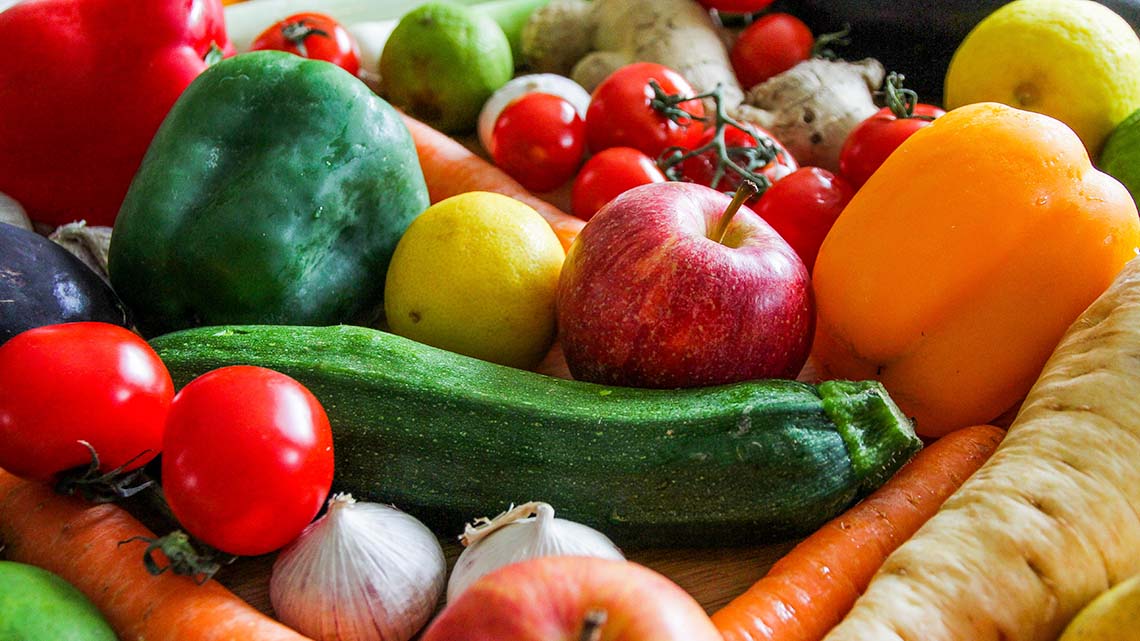
Apples, oranges, lettuce, squash…have you ever stopped to think about what is involved in growing these different types of foods?
What’s the first step? What would need to go into successfully growing a fruit or a vegetable?
Brainstorm the process and record your thinking using a method of your choice such as in print, digitally or with an audio recording.
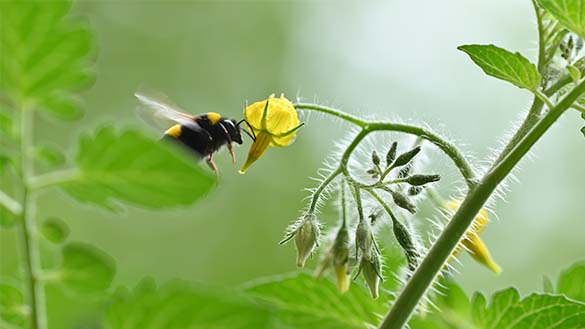
In your brainstorming, did you consider that pollinators and bacteria play an essential role in the growing of these crops? Did you also consider that climate and weather also play a very critical role?
How do you think these new factors influence the growth of different crops?
Record your thinking using a method of your choice. If possible, share your ideas with a partner to compare thoughts.
Action
A closer look at agriculture
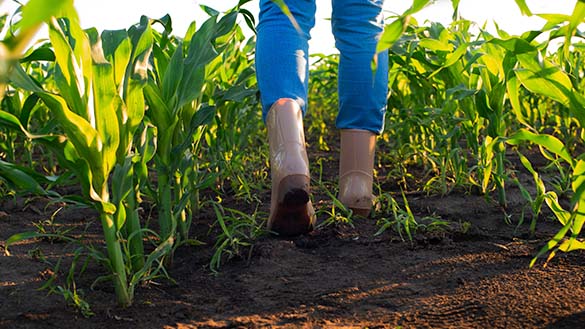
Agriculture, simply put, is farming. It’s the practice, or science, of cultivating and growing our food. It is done on a local scale, like in small communities or home gardens, and on a large scale, like commercial farms that supply large populations. It fuels and sustains human life and many insect, animal, and microscopic life on our planet too.
Agriculture is a complex topic. It contributes to the diversity of organisms on our planet and can help sustain biodiversity through the interconnectedness of all the living organisms involved in the process of growing food. But depending on farming practices, it can also hinder biodiversity.
It also plays a key, but interesting, role in our planet’s ecosystem, as it contributes both positively and negatively to the gases in Earth’s atmosphere–both helping and contributing to climate change depending on the type of farm and their farming practices.
Indigenous peoples throughout the world have long studied and taught their younger generations about the complex interconnectedness of all things on the Earth. The delicate balance of webs of life. Historically, not all people have considered this perspective and understanding and now our planet is changing at a rate faster than many life forms can keep up with.
Let’s investigate how our Earth’s changing climate, and its relationship with different agricultural practices, are impacting the diversity of life on our planet.
Global connection
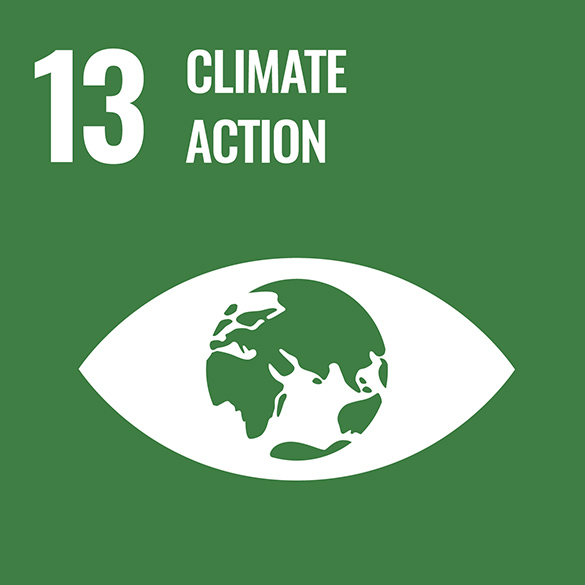
The United Nations (UN) is a group of many countries from around the world that have come together to create a better future for people and the environment. They have created 17 goals called the Sustainable Development Goals.
This learning activity is connected to Goal #13: Climate Action. This means everyone should help reduce climate change and its impact. Storms, disasters, and lack of food and water are made worse by climate change.
Brainstorm
Brainstorm
How does climate change impact our ability to grow plants for food and raise animals for our consumption? Use the following chart, or another method of your choice, to brainstorm some of the impacts that different effects of climate change may have on global agricultural practices.
Complete Climate Change and Agriculture in your notebook or using the following fillable and printable document. If you would like, you can use speech-to-text or audio recording tools to record your thoughts.
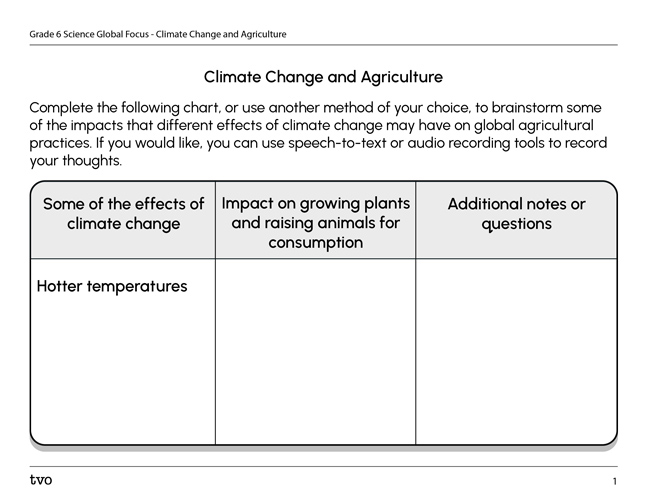
Press the Activity button to access Climate Change and Agriculture.
Activity (Open PDF in a new tab)Press ‘Hint’ to access some information to consider that might help you fill in your chart.
The faster than usual changes to Earth’s climate are causing hotter-than-usual temperatures which are leading to more wildfires, higher instances of drought, expanding deserts and shifting growing seasons. The Earth is also experiencing more severe storms than it has in the past, such as damaging hailstorms and winds, tornados, and hurricanes. Often, these severe weather systems cause flooding or landslides destroying many homes and habitats. More often than not, these effects mean fewer food sources as land on which various food sources used to grow are being altered or damaged.
Exploring terms and facts
Complete the following matching activity to explore some terms and facts related to farming and agriculture.
For each sentence starter, select the ending that you think best fits. Once you've found a correct match, record the full sentence in a notebook or using a method of your choice. You may play multiple times to reveal new pairings.
Monoculture vs. polyculture farming
There are many different methods of farming and agricultural practices, but we are going to investigate two specific types: monoculture and polyculture.
Explore this video clip from Science North entitled “Biodiversity: Agriculture” to learn more about two different types of agriculture, monoculture and polyculture, and their connection to biodiversity.
Let’s do an experiment to simulate being farmers on two different farms to better understand the pros and cons of monoculture and polyculture farming. Before we begin, let’s review the Scientific Experimentation Process.
Check out this video to learn about the steps of the Scientific Experimentation Process.
It’s time to experiment!
Safety
Before you explore the following experiment, let’s perform a safety check.
Hands-on Science
Hands-on science
For this experiment, we will be learning about two different types of farming practices: monoculture and polyculture.
Please note, you will need to access the following handout titled “Experiment Scenarios” to complete the investigation.
|
MONOCULTURE |
POLYCULTURE |
|---|---|
|
|
|
|
|
|
Press the ‘Activity’ button to access Experiment Scenarios.
Complete the Lab Sheet: Monoculture vs. Polyculture in your notebook or using the following fillable and printable document. If you would like, you can use speech-to-text or audio recording tools to record your thoughts.
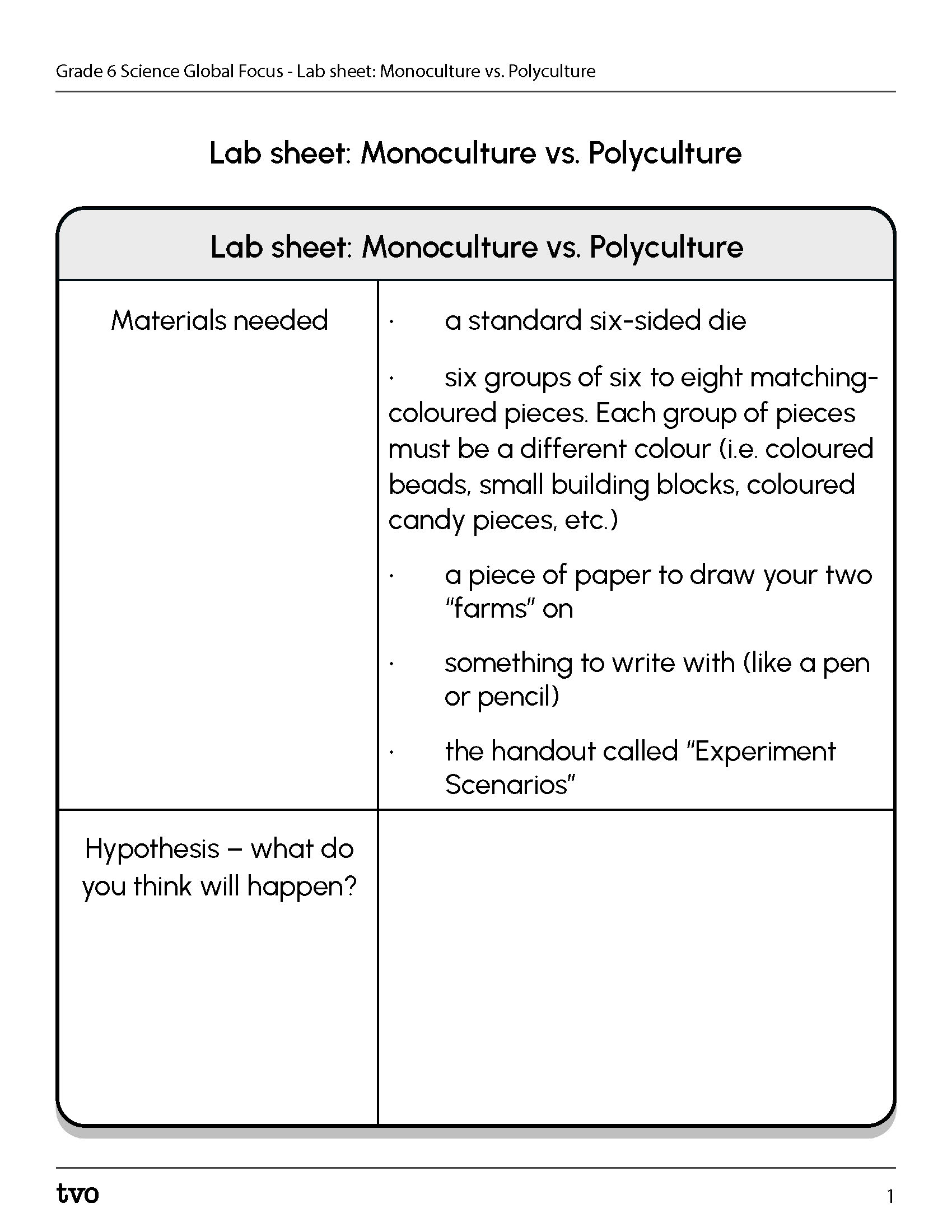
Press the Activity button to access the Lab Sheet: Monoculture vs. Polyculture.
Activity (Open PDF in a new tab)Press the following tabs to access the materials and procedure for the Monoculture vs. Polyculture experiment.
If you do not have access to materials, access the “Video demonstration” tab to explore the experiment in action. You can use the video to make your observations and draw your conclusions.
- a standard six-sided die
- six groups of six to eight matching-coloured pieces. Each group of pieces must be a different colour (i.e. coloured beads, small building blocks, coloured candy pieces, etc.)
- a piece of paper to draw your two “farms” on
- something to write with (like a pen or pencil)
- the handout called “Experiment Scenarios”
- On the piece of paper, draw two identical large rectangles. Label one “Monoculture Farm” and the other “Polyculture Farm”.
- Separate all your pieces into groups of matching colours and place them around the piece of paper. Each colour will represent a species of plant.
- To begin, place six pieces of one colour in your “Monoculture Farm” rectangle (i.e. all red pieces). In your “Polyculture Farm” rectangle, place six pieces that are each a different colour (Note: do not use the same colour as you did in the Monoculture Farm! Choose six NEW colours).
- Roll your die. Starting at scenario #1 on your handout called “Experiment Scenarios”, compare the number that you rolled to the instructions listed under scenario #1 to know what actions to perform in each of your farms. If you roll an exact match of a number listed, roll again!
- Keep rolling and performing the actions listed under each scenario until you have completed all eight scenarios. Record your final results and any observations made throughout the experiment.
- Consider repeating the entire experiment at least 3 times and compare the overall results.
Check out this video to explore a demonstration of the Monoculture vs. Polyculture experiment. Please note that materials and procedure in the video may vary slightly from what is listed in the previous tabs.
Now that you have completed your lab sheet, press ‘Hint’ to access some possible answers to the questions asked.
- Which method of farming yielded the most crops: monoculture or polyculture? Polyculture most likely yielded the most crops.
- Explain why you think this occurred.Polyculture has different types of plants instead of just one type, so it has a higher resistance to threats and is able to naturally self-sustain itself.

Science is about reflecting and reimagining. Was your experiment successful?
Is there anything that you would change about your experiment design to improve it or the outcome?
Even if your experiment was not successful, what did you learn or confirm about the topic you were investigating?
While time-consuming to setup and more labour-intensive to harvest, diversity in farming practices creates and supports biodiversity and also helps buffer the effects of climate change.
Let’s examine an example.
Did You Know?
The Three Sisters
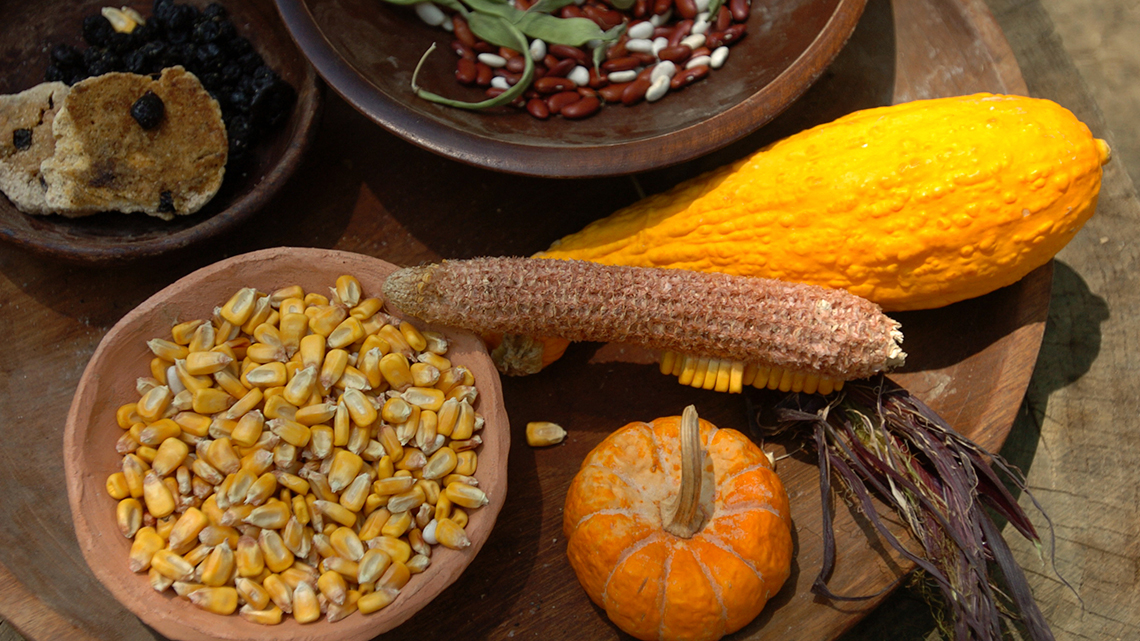
Indigenous peoples have been practising polyculture growing for a very long time. They have known the benefits of this type of agriculture and still practise polyculture today.
Explore the following video clip from the show Raven’s Quest, from the episode entitled “Hope” to learn about an 11-year-old Ojibwe girl from the Three Fires Confederacy in Wikwemkoong, Ontario and her Three Sisters garden.
In your notebook or using a method of your choice, explain how growing different species of plants together, such as squash, corn, and beans, can benefit the different plants.
Why does monoculture exist?
While it may seem that the benefits of polyculture, such as promoting biodiversity and reducing the speed and effects of climate change, are reason enough for farmers to choose this method of agriculture, the case is not so cut and dry.
Monoculture farming exists because, on the whole, it is a much easier way to get large amounts of one type of crop for various commercial uses.
Test Your Skills
Soybeans: Ontario’s largest crop
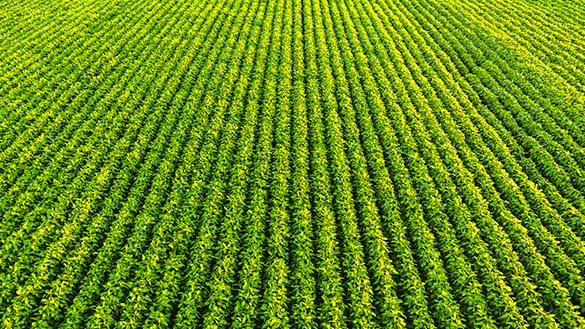
Did you know that in Ontario the largest commercial crops planted are soybeans, followed very closely by corn.
Both of these plants have many different uses but mostly they get used in food manufacturing and industrial products, as well as for feeding livestock such as cattle and chickens.
Because these types of crops have many, many uses, they are needed in very large quantities which requires quick and efficient growing and harvesting methods. Monoculture farming allows for this to happen because machines can be used to quickly harvest the crop given that they are all the same type. It also tends to cost less because the farm is specializing in only one type of species management so they only need equipment, resources and knowledge of that one crop.
But monoculture does not support biodiversity, depletes soils of their nutrients and encourages pests, viruses and diseases from growing and spreading through the crop.
So, what is the better method of farming: monoculture or polyculture? Is it possible that the answer isn’t an either/or? Could a hybrid solution actually be the answer? Afterall, as different Indigenous peoples around the world have long been observing and teaching, everything is interconnected.
Consolidation
Forming our own opinion

Now that you have investigated monoculture and polyculture farming, answer the following questions using a method your choice such as in print, digitally or using an audio recording.
- Which method of farming offers the largest biodiversity?
- Write a pro and a con list for each method of farming.
Pause and Reflect
What’s your opinion?
Using a format of your choice, write a personal opinion on the type of farming you think is optimal, taking into consideration the effects and the impacts of climate change and the impacts to biodiversity.
Reflection
As you read through these descriptions, which sentence best describes how you are feeling about your understanding of this learning activity? Press the button that is beside this sentence.
I feel…
Now, record your ideas using a voice recorder, speech-to-text, or writing tool.